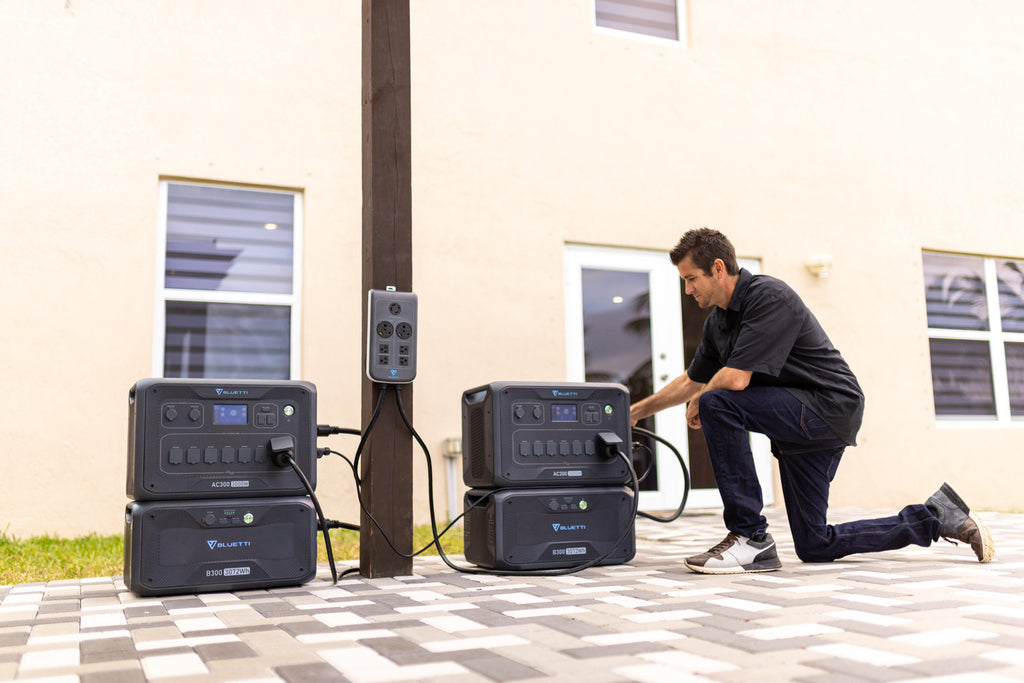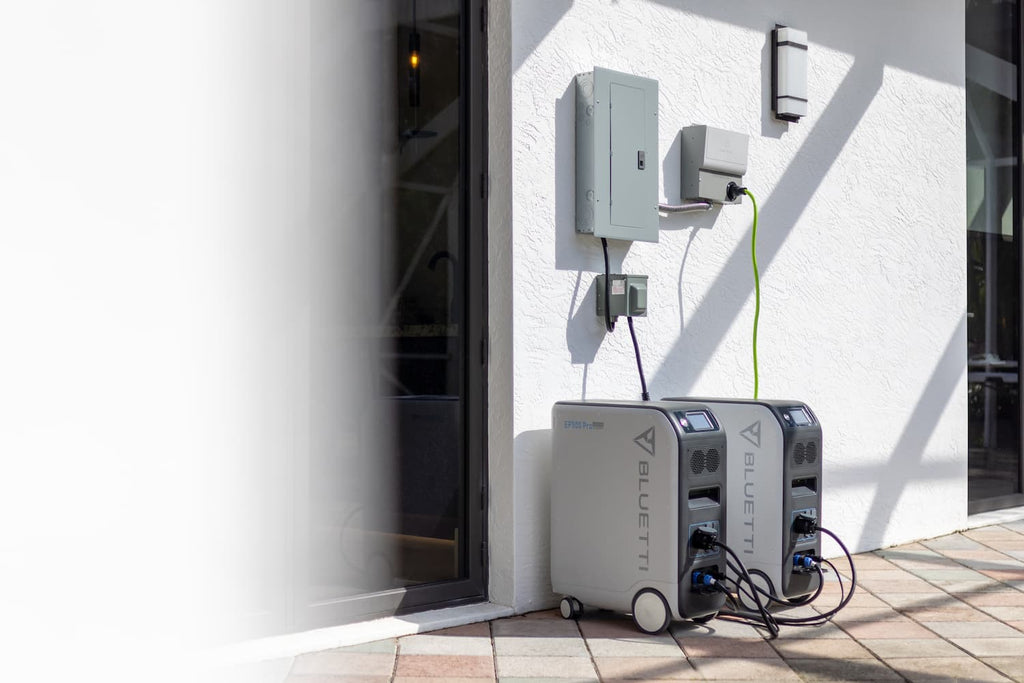It is a world of instant access to information and entertainment. You want news, watch it on your way to the office; you want a movie, watch it on your way back home, or just chat with your friend on the other side of the globe—our portable gadgets are always there, connecting us to the world. But one thing can actually ruin the experience: running out of battery. No one likes to see their screen flash low battery, especially when their device is needed the most. That's why understanding how batteries work and how we can pick the proper one that works just perfectly for our needs is so important.
That is going to be the subject of our article here, the capacity of batteries, and this, in turn, will be the key factor in determining how long a battery will be able to power our devices. We shall also get to learn how the battery capacity is expressed in mAh, how it is affected by different factors, and finally how to compare different batteries by their capacity.
What is the Battery Capacity?
Think of the battery as an energy reservoir in standby mode to power your device. Its size—that of the quantum of energy it can store and deliver—is essentially defined by the battery capacity, based on the chemical composition, size, and design of battery cells.
Capacity of a battery is usually denoted in ampere hours (Ah), watt hours (Wh), or kilowatt hours (kWh), respectively, to the expected scale and its application. Whereas, ampere hours in their turn represent how much current a battery can give over a certain period. Watt-hours and kilowatt-hours are, on the other hand, the energy content amounts which can be provided by a battery in a period of time.
Basically, the greater the capacity, the greater energy it stores.
Factors Affecting a Battery's Capacity
Batteries are silent heroes supplying our numerous electronic devices, starting with tiny gadgets and finishing with vast systems. So, as for the factors determining the capacity or how much energy batteries can store and give out, they include the shape, size, chemistry, voltage, and recharging ability. Two important parameters affecting battery capacity are related to the plate count and size in battery cells and the electrolyte density.
Plate count and size in the battery cell relate to the quantity and dimensions of electrodes that store and unleash electrical energy. This is so since more plates and larger plates mean more surface area of the plate to store energy, which then would mean more capacity and more life of the battery. The thickness and shape of the plate also come into consideration for capacity and efficiency of the battery.
Electrolyte density in a battery means concentration or the density of the liquid or gel that assists in the chemical reactions and generates electricity. The higher the density of the electrolyte in a battery, the greater its capacity and power output. It, in turn, however, causes more wear and tear on the electrodes and thus reducing the battery life. On the other hand, lesser electrolyte density does extend battery life but decreases capacity and power output.

What is mAh?
Just imagine, you had a bucket of water which you would use to water the plants. The size of that bucket would be equal to the mAh of a battery. It tells you how much water you would be able to store and use. A milliampere-hour is one milliampere for one hour—just that much "electric juice" that a battery can pour out.
Then one's capacity to drain one milliampere—a tiny droplet—for one hour straight before the bucket runs dry. For instance, a 'bucket' of 10,000 mAh of charge is capable of providing 10 amperes (a big splash) of current for an hour or 5 amperes (a medium splash) for two hours or 1 ampere (a small splash) for 10 hours and so on.
The bigger the bucket (mAh), the more water (power) you can store and use. But it's not all in mAh; the size of the plants, the weather, and the hose are equally important. Similarly, the type of device, the usage, and the charger also affect how long the battery lasts.
How Does mAh Affect Battery Life?
The longevity of our devices plays an important role in our digital experiences, affecting both our efficiency and comfort. Hence, it's essential to understand what is denoted by milliampere-hour (mAh) ratings when determining battery life.
mAh is a measure of the electric charge that can be stored and delivered. A battery of higher mAh rating is able to store more charge, thus sustaining a device for a longer period.
This also impacts a device's charging time similarly. Higher rating of mAh means a longer time to charge a device, as more electric energy is to be stored up. Conversely, the lower rating of mAh results in a shorter charging time, the reason being the lesser amount of electric energy to be stored.
However, one has to consider that the charging time is based on not only the mAh rating but the other factors include charging technique, quality of the cable, and the usage of the device while it is charging. For instance, a gadget with low mAh ratings can have its battery overheating and that particular battery does not last long if it uses a fast-charging adapter.
The mAh rating is basically dependent on the type of battery and size, plus the device that it is within. For example, a good battery capacity for a power bank would be around 12,000 mAh, while for a smartphone with good battery life, it would exceed 4,500 mAh. Normally, tablets and laptops have batteries of around 8,000 mAh.
A device with a higher mAh rating implies a longer battery life but also a longer charging time. For most smartphones, like playing games, watching videos, and other intensive use, its duration is from 3 up to 5 hours if it has a 3,000 mAh one, over 5 hours in the case of 4,000 mAh, and even longer for an even bigger capacity such as 5,000 mAh. However, the more the mAh rating, the longer time your gadget takes to charge.
If your gadget is to outlive the battery capacity, you can use a power station battery pack such as:
BLUETTI AC300+B300

First in the line we're proudly introducing the latest pack, the AC300+B300, featuring 3,000W pure sine wave inverter capability. It's supported with an ability to surge power up to 6,000W, coupled with the remarkable 3,072Wh LiFePO₄ long cycle life battery. The B300 system capacity is expandable with up to four B300 modules to a maximum of 12,288Wh in total.
It supports a 240V split phase binding and gives a 24/7 UPS home backup. The AC300+B300 can be charged in 7 different ways of which include Solar, AC, Car, Generator, Lead-Acid Battery, Dual AC, and AC+Solar. Finally, it provides a 2400W max solar input and an additional 5400W max fast dual charging capacity.
BLUETTI EP500Pro

It is a solar power station, more so portable, designed to provide reliable and friendly energy for your house. This has a 5120Wh LiFePO4 battery life of more than 3500+ cycles as well as a pure sine wave output 3000W for multiple device power output at the same time. It functions as an in-grid UPS, acts as an off-grid energy storage system, and supports versatile and 7X24 UPS modes. The EP500Pro could be recharged in various ways: solar, AC, car, generator, and lead-acid battery. It also features a smart touchscreen and an app remote control for effortless operation and monitoring.
BLUETTI AC200MAX

This versatile expandable backup delivers up to 2,200W of pure sine wave power and 4,800W surge. It has a 2,048Wh LiFePO4 battery, which guarantees more than 3,500 cycles of life and can be further equipped with two B230 or B300 modules for an additional 8,192Wh of storage. The recharging methods include AC, solar, car, generator, lead battery, dual AC, and AC+Solar in all, a total of seven ways in which the AC200MAX can be recharged. It also features a 900W max solar input and fast dual charging with a 1400W max.
Selecting the Right Battery for Your Device
Think about your usage patterns and budget, and consider the capacity (mAh), voltage, operating temperature, size, and shape of the battery, as well as the chemical composition in lead-acid, nickel, or lithium. Each of them has their pluses and minuses, so make your choice to fit your needs. Last but not least, follow instructions for storing and using to prolong the battery life.
Final Thoughts
Battery capacity explained is a very critical factor in sensible battery use and purchase. In the face of a deluge of devices and the variety of battery types that power them, the attention being given to battery capacity and the basis of its measurement is key to the proper operation of the battery. The operational time of the device before any recharging is therefore determined by the battery capacity, while the knowledge of proper charging and discharging helps extend the life of the battery. Observing them will thus entail the optimal selection of batteries for your devices and assured efficiency and reliability of performance.




